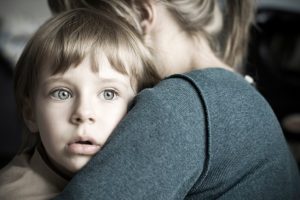Social Anxiety Disorder
Anxiety in Children
Many children suffering from anxiety have little understanding of what is going on internally. They blame their catastrophic worries on themselves, believing that something must be wrong with them. Their worries and thoughts consume their minds thus making it difficult to concentrate or to implement any sort of change. For a child suffering from anxiety, change represents uncertainty which increases the physiological and psychological symptoms of anxiety. Also, many children suffering from anxiety are so consumed by their negative thoughts and fears that it becomes difficult for them to perform to the best of their ability in school or social situations. They imagine the worst possible outcomes for any given situation and from that point forward the negativity of the thoughts increases. Though there are multiple types of anxiety, social and performance based anxiety is often referred to as Social Anxiety Disorder.
What is Social Anxiety Disorder?
Just because someone may suffer from Social Anxiety disorder does not necessarily mean that they are introverted or shy. Social Anxiety Disorder may debilitate a child when they imagine the potential ridicule from their peers should they fail in social and performance settings. A child suffering from anxiety will often face difficulty paying attention in school, making friends, or performing in front of a crowd. The reason they struggle is based on a fear of failure and a lack of self-confidence, which ultimately makes it difficult for the child to develop assertiveness.
What are the symptoms of anxiety?
A child suffering from Social Anxiety Disorder may find it impossible to participate in some of the same activities as their peers because they are driven by their fear of rejection. They will generally try to avoid these uncomfortable situations to the best of their ability. If the situation is unavoidable, physiological responses may take over. The symptoms of anxiety include hyperventilation, nausea, increased heart-rate, upset stomach, dizziness, sweating, and panic attacks.
Identifying Anxiety
The biggest challenge in treating anxiety in children is identifying the problem. Many children suffer from anxiety and are too afraid to disclose their negative thoughts because of their fear of rejection. Many parents attribute their child’s behavior to something other than anxiety. However, anxiety is extremely common in children and is too often overlooked. Once identified, it is relatively easy to treat; Cognitive Based Therapy provides methods to control the anxiety. Patients learn effective skills through relaxation and mindfulness training, role-playing, and social skills training. They are given the opportunity not only to face their fears but to identify the triggers behind their anxiety and regain control of their thoughts.
Tags: anxiety, anxiety symptoms, parenting tips, Social Anxiety Disorder









Leave a Reply